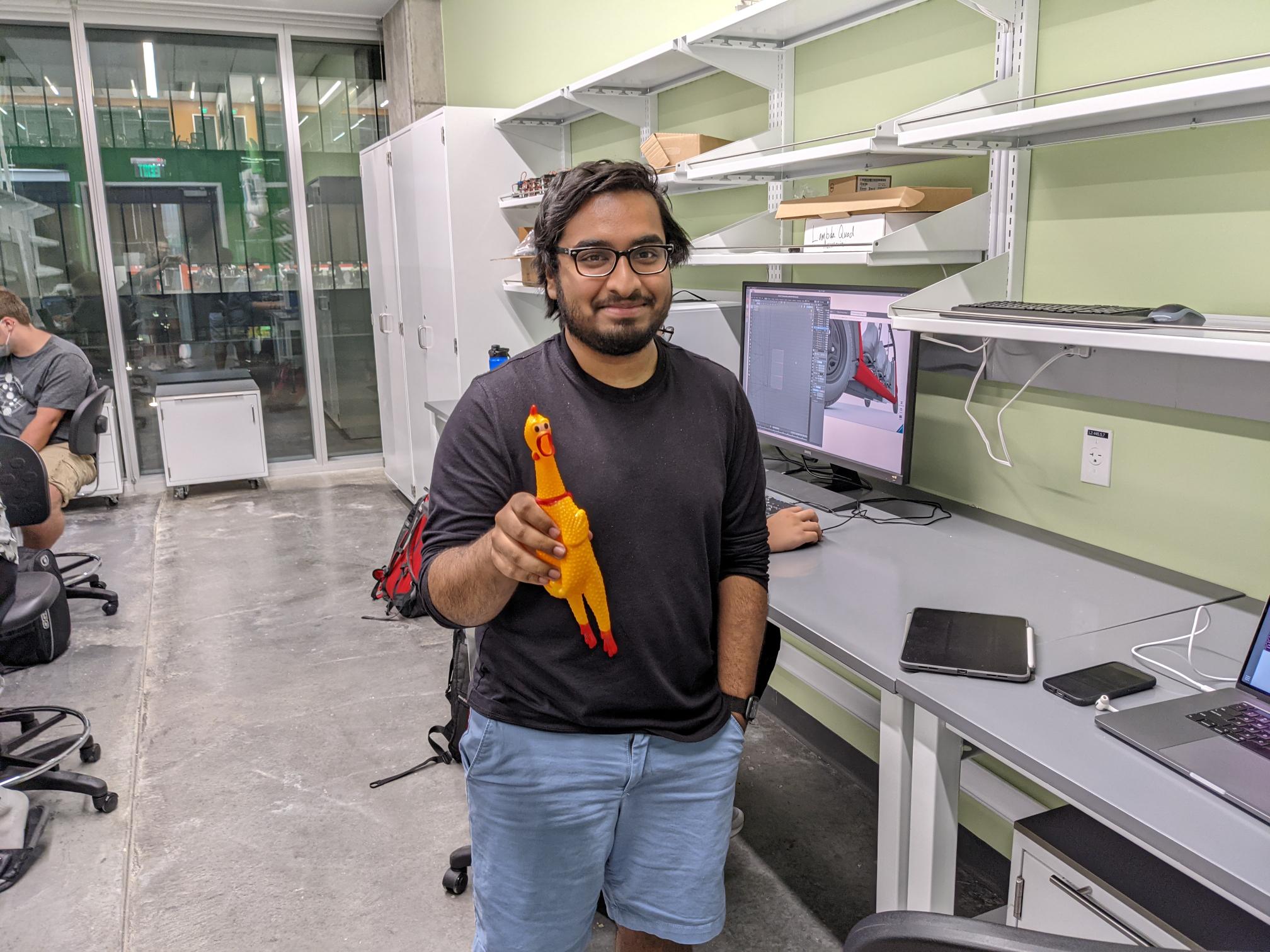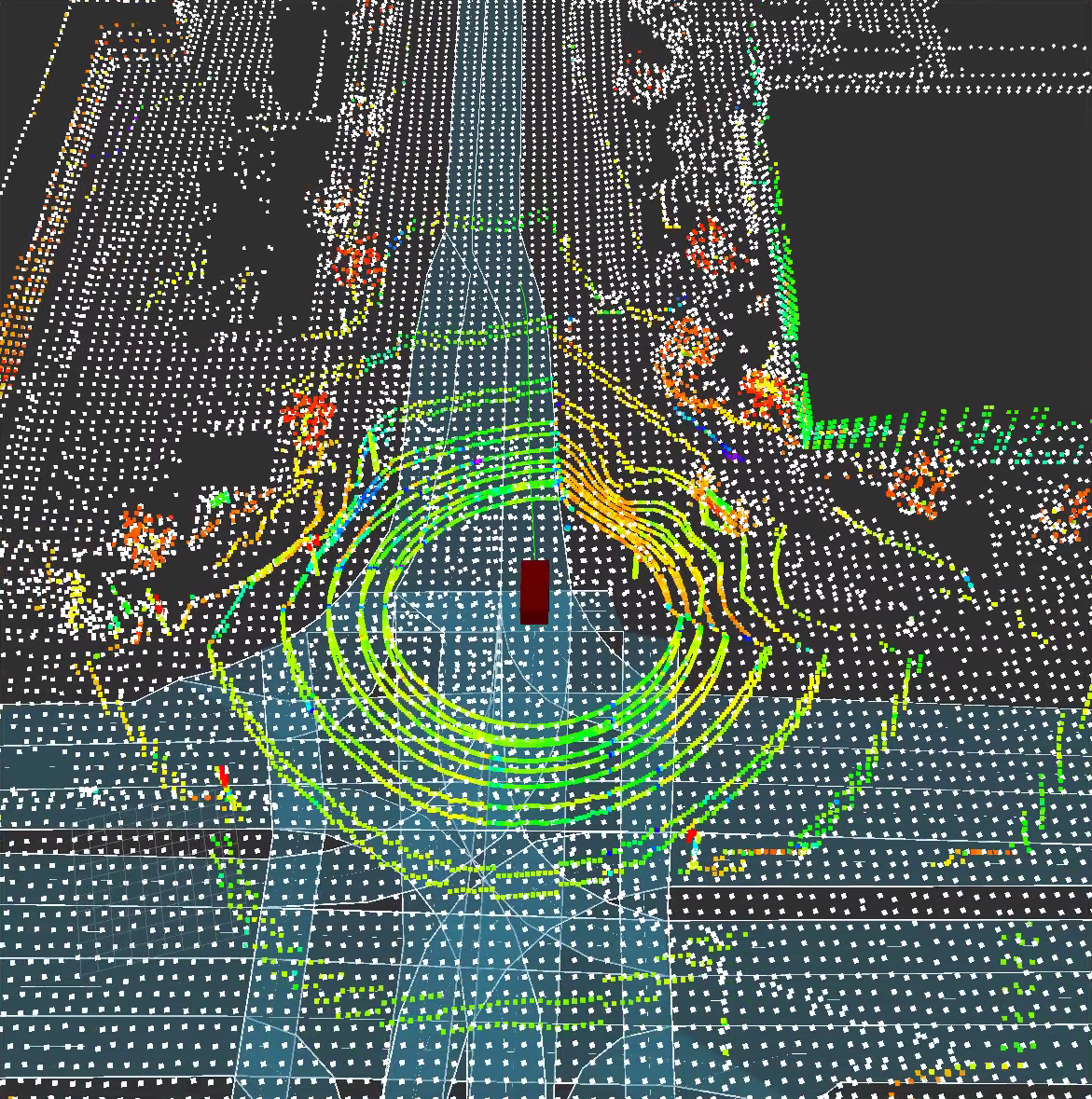Driving is hard, but humans make it look easy. We're UT Dallas's applied autonomous driving project, and we're making driving look easier than ever.
YouTube
 LinkedIn
LinkedIn
project.nova@utdallas.edu
Latest posts
New Members and Goals! 23-24 11/15/23Planning with cost maps 2/13/23
What's up with Nova? 2/2/23
New members (and goodbyes) 10/23/22
Why we like Nova (video) 8/27/22
All posts ⟶
Data Visualization & Interface - Raghav Pillai
by Dylan Hiu
In our previous post, we debuted our weekly tradition of awarding our prized Rubber Chicken to a member of the Nova team who we feel deserves special recognition for their contributions to our goals. This week, we recognize Raghav Pillai, our head of Data Visualization & Interface design!
Raghav’s recognition this week emphasizes his dedication to Nova and the hard work he’s put into the project. Aside from Nova, Raghav is an active student around campus, being involved with multiple other projects. A junior in computer science, Raghav is involved extracurriculars both at an undergraduate level and with other graduate students. In fact, Raghav recently place second in Hack UTD in the category of Investment Strategies for Goldman Sachs! He has spent a great deal of time working in freelance and full-stack code development, and his wealth of experience elevates Nova to an entirely different level.
Raghav’s role in Nova as the head of Data Visualization combines the work of multiple different members of the team. His aim is to take the raw data from Hail Bopp’s sensors along with the data from our GPS and positional equipment mounted on the vehicle and convert them into a visual representation of what the vehicle “sees” as it travels through space. This work is a complicated process that involves collaboration with almost every group within Nova. For example, Data from the Perception Team is needed in order to process and identify the surroundings of the vehicle. 3D renders from our Technical Artist are needed to be integrated with this data in order to have models for the identified objects. Finally, Raghav’s work helps collect all of this information together to accurately represent the space around the vehicle. This data will eventually be displayed on a monitor mounted on the interior of the vehicle, allowing the operator and passengers to have an idea of what the car is detecting around it.
This type of operation is critical for multiple reasons. The first is that from an engineering perspective, we need to be able to know precisely what the car detects around it. Without this data, creating a safe path for the vehicle to follow is impossible. It also prevents us from being able to create functional emergency stop algorithms. After all, if the vehicle is not able to detect obstacles in its path, then to the car, there is no reason to stop. This, of course, is not ideal for us: we would prefer if Hail Bopp did not ram itself through a bush in its path that it failed to detect.
The other reason that Raghav’s work is so important is that it greatly increases the feeling of safety and security for passengers. Imagine if, as a passenger in a self-driving vehicle, the car began to drive, brake, and steer without any indication of what the car is aware of. This can be extremely unsettling for passengers. However, the digital visualization of what is around the vehicle can give customers a sense of security. Knowing that the car can also see the obstacles and surroundings in the same way that the passengers do can be reassuring for those unfamiliar with autonomous vehicles. In fact, since the car can receive data from all around the vehicle and display an intuitive top-down view of its surroundings, the visualization can give passengers a sense that the vehicle is entirely in control in its environment. You can a closer look at the beginning of this visualization below!
Raghav’s work accomplishes these aims, but he also recognizes the contributions of that of the rest of the team to his work. To Raghav, “What Nova is more than anything is that it’s kind of a symbol to show what you can do with a team with people who are motivated. It’s a symbol of what we can do together if we work together as a team.” He also offers students who have big dreams some encouragement: “This project is a testament to all the people out there who don’t know where to get started. You just need to get started to make something.”



